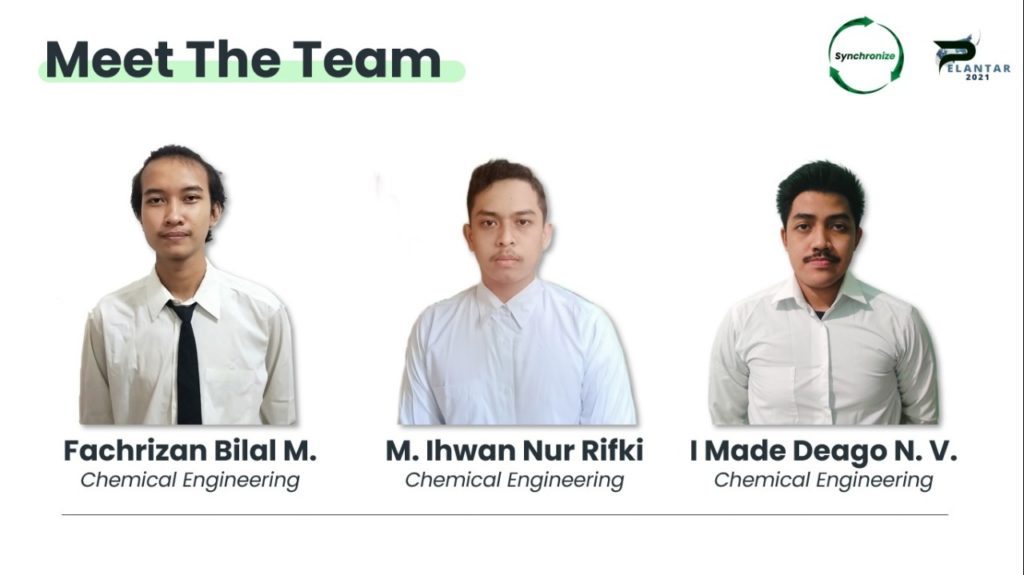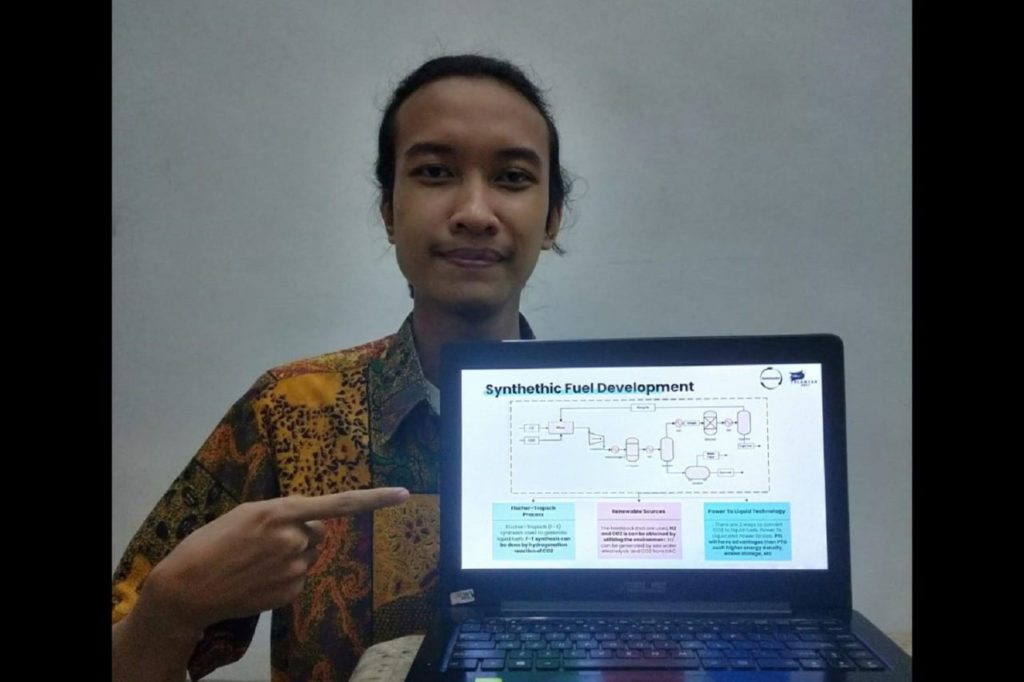Making Carbon Neutral, ITS Students Initiate Synthetic Fuel

(from left) Fachrizan Bilal Masrur, Muhammad Ihwan Nur Rifki, and I Made Deago Nugra Visesa, who are members of the ITS Synchronize team
ITS Campus, ITS News – The use of oil and natural gas in the global energy mix is still the largest contributor, with 54.2 percent. To replace the conventional fuel, which is high in carbon emissions, three students of the Institut Teknologi Sepuluh November (ITS), who are members of the Synchronize team, initiated a synthetic fuel using digital twin technology.
Fachrizan Bilal Masrur, Head of the Synchronize team, said that various countries in the world have agreed to reduce carbon emissions through the Paris Agreement. According to him, one way to reduce carbon emissions is to apply Carbon Capture and Storage (CCS) technology. “CCS is a technology to separate, transport, and store carbon emissions released by industrial processes,” he explained.
Based on this, the Synchronize team initiated the use of carbon dioxide as a source of raw materials and further processed to produce synthetic fuels through hydrogenation reactions. “Synthetic fuels have very similar performance to fossil fuels in general, so they can be used in current vehicle engines and are more environmentally friendly,” said the student who is usually called Bilal.

ITS Synchronize team leader Fachrizan Bilal Mansur shows the results of his team’s innovation in realizing carbon neutral by initiating synthetic fuels
Furthermore, this third-year student explained that digital twin technology is used to speed up its implementation, which is a visual representation of an operating system. “Digital twins can provide a partial picture of what is going on and maybe what will happen to the system,” he explained.
With the help of digital twin technology, the composition of the conventional fuel mixture with the most optimal synthetic fuel for a particular vehicle engine can be determined. “If synthetic fuel is applied to all vehicles, especially passenger vehicles, it can potentially reduce carbon emissions by 4.6 metric tons per year,” said Bilal again.
Through this innovation, the Synchronize team has also won second place in the 2021 Pelantar Technical Paper Contest competition held by the Society of Petroleum Engineering Universiti Teknologi MARA Student Chapter (SPE UiTM SC), Malaysia.
Together with Bilal, this team consisted of two other Chemical Engineering students, namely Muhammad Ihwan Nur Rifki and I Made Deago Nugra Visesa. In the future, the Synchronize team hopes that their innovations can be immediately applied in everyday life and gradually replace conventional fuels to help realize carbon neutrality. (ITS Public Relation)
Reporter: Tyara Novia Andhin
Related News
-
ITS Lecturer Introduces Madurese Culture to the International Stage
ITS Campus, ITS News — Continuing to show local wisdom to the world community, this time a lecturer from the Department
January 11, 2022 19:01 -
ITS Researchers Remind TKDN is Crucial for Economic Independence
ITS Campus, ITS News — The Domestic Component Level (TKDN) is the key to restoring the glory of the Indonesian
January 11, 2022 19:01 -
Strengthening Quality Education, ITS Professor Develops Adaptive Technology for Students
ITS Campus, ITS News — Differences in students’ abilities in understanding lessons are often a challenge for teachers in the classroom.
January 11, 2022 19:01 -
ITS Graduates Create Reverse Logistics Model for PET Plastic Waste Recycling
ITS Campus, ITS News — Doctoral graduate from the Department of Industrial and Systems Engineering, Sepuluh Nopember Institute of Technology (ITS) Dr. Yuniar
January 11, 2022 19:01
